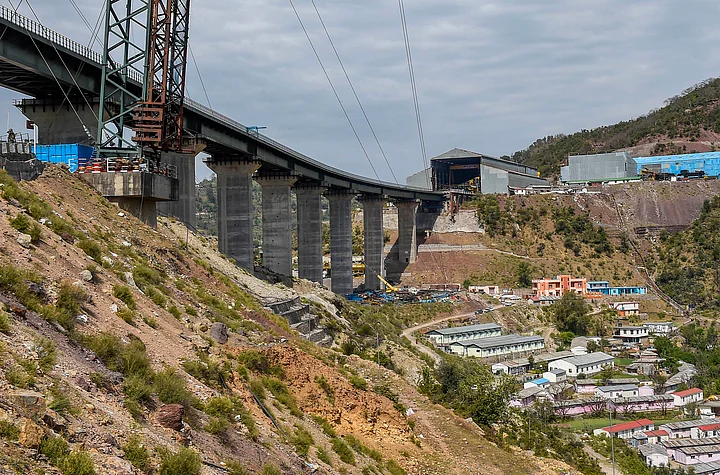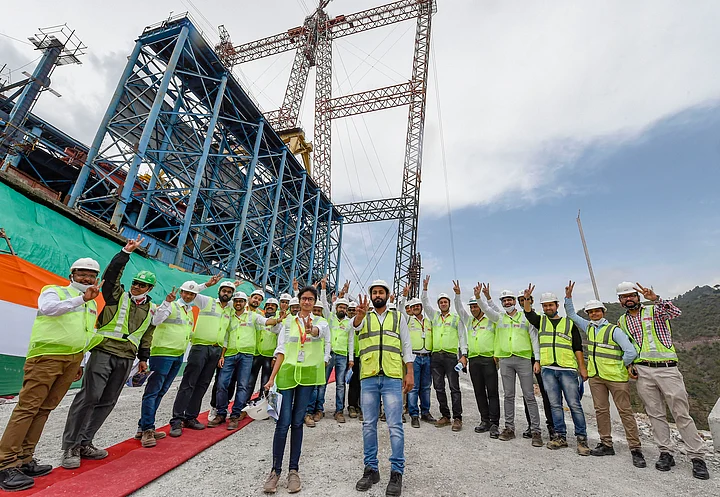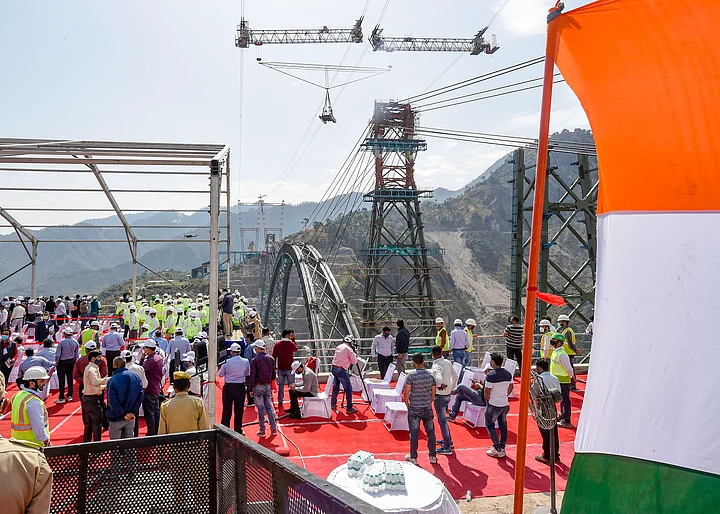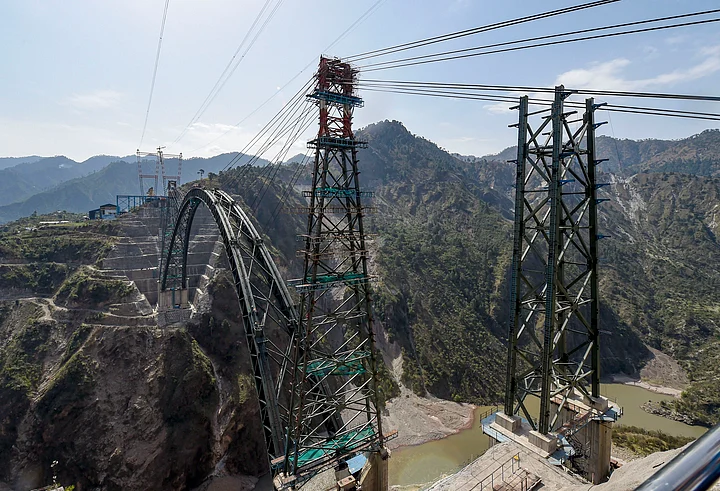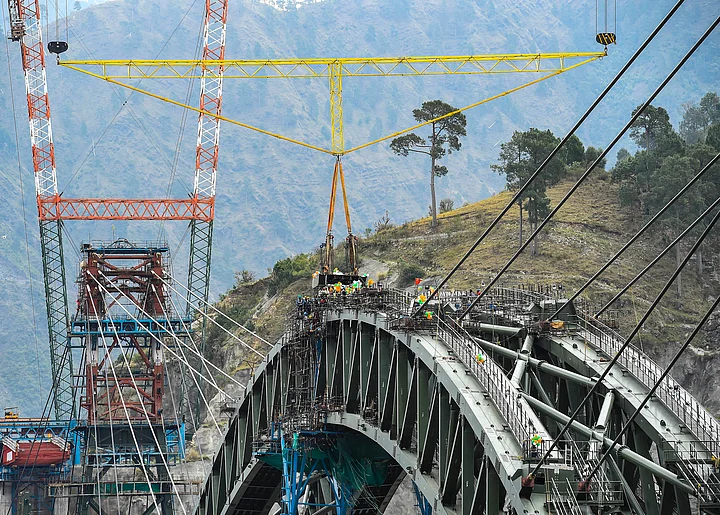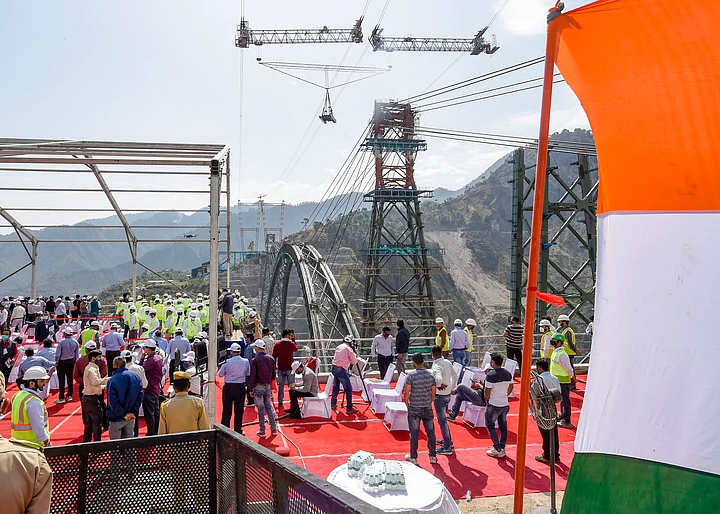In a major milestone, the construction of the arch for worlds’ highest railway bridge was completed in Chenab, Monday, 5 April, marking the completion of the 111-km long-winding stretch from Katra to Banihal in Jammu and Kashmir.
The last 5.3-metre piece of metal was fitted at the highest point on Monday and was the most difficult part of the multi-crore bridge over Chenab, which soars 359 metres above the bed of river Chenab and is also 30 metres higher than the iconic Eiffel Tower in Paris.
The bridge with a budget of Rs 1,486 crore is a part of the Udhampur-Srinagar-Baramulla Railway Link (USBRL) project.
Railway Minister Piyush Goyal, who witnessed the completion of the bridge via video conferencing, took to Twitter to say: “A moment of pride for India! The arch of Chenab bridge, connecting Kashmir to Kanyakumari has been completed. With an arch span of 467m, it is the world’s highest railway bridge.”
Along with Goyal, the completion was also witnessed by Northern Railway General Manager Ashutosh Gangal and Konkan Railway Chairman and Managing Director Sanjay Gupta, attended the function.
The next step is now laying the tracks.
Here’s All We Know About the Iconic Bridge
- The bridge is located on the Katra-Banihal railway line at village Kauri in Reasi district.
- The initial target for the completion of the bridge was 2019.
- The construction of the bridge began in 2004, but the work was stopped in 2008-09 due to concerns about the safety of the rail passengers due to frequent high velocity winds in the area.
- After fresh surveys, it was decided not to change the site as it is the most suited taking into account the high altitude.
- After the bridge opens, railways will have to stop train operations when the wind velocity rises to 90 kmph with the help of the automatic signalling system and anemometer (instrument to measure the velocity of winds). The bridge can reportedly withstand upto 260 kmph winds.
- The project was a joint venture undertaken by AFCONS Construction Company, VSL and Ultra companies.
- A crane from Italy at a cost of Rs 20 crore was brought to carry all the construction material to the site of bridge, which would become a railway property after the completion of the bridge and would remain installed there for maintenance purposes.
- Technology firm Denmak has made a model study for the construction of bridge while US-based ITASCA company has rendered help in slope stabilisation.
(At The Quint, we question everything. Play an active role in shaping our journalism by becoming a member today.)
